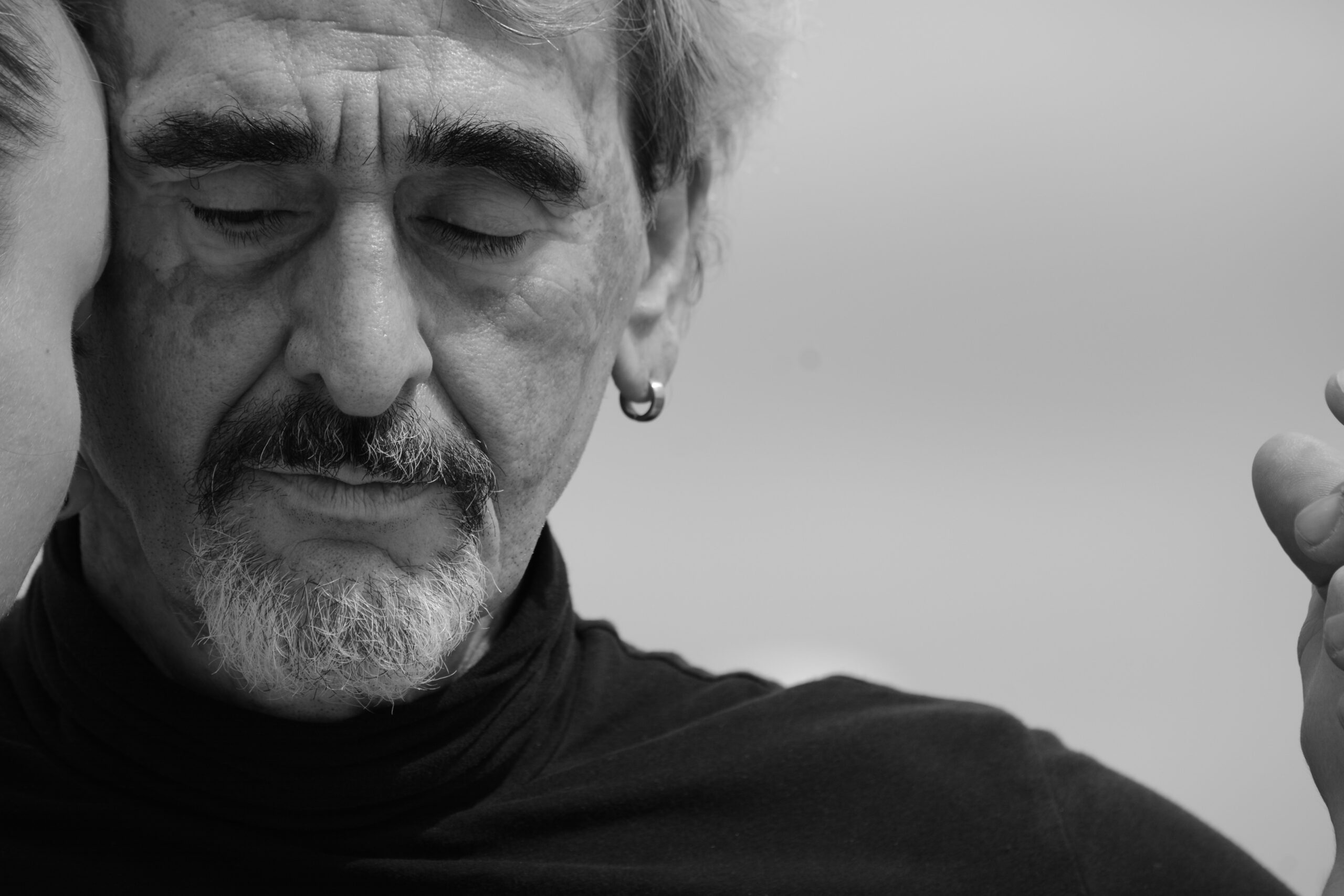
James Donaldson on Mental Health - When Are Kids Ready for Social Media?
And how to monitor social media use when kids are starting out
Writer: Caroline Miller
Clinical Experts: Dave Anderson, PhD , Jerry Bubrick, PhD , Max Stossel
What You'll Learn
- Should kids in middle school be on social media?
- Why should parents monitor kids' social media use?
- How can parents limit what kids are exposed to through social media?
- Quick Read
- Full Article
- Pressure on parents
- Choosing the right time
- Monitoring kids on social media
- Rules for social media access
- Parental controls
- Kids who are vulnerable
By the time they’re in middle school, kids are often eager to go on social media apps like Instagram, TikTok and WhatsApp to share things with their friends. But parents are wary because social media can be harmful to kids’ self-esteem. And kids who post impulsively can create serious problems for themselves.
While some experts and parental groups recommend waiting until kids are at least in the eighth grade to let them have access to social media, others note that it really depends on your child’s maturity level. But experts agree that when you do allow access to social media, it’s important to monitor what kids are posting on it. They recommend having your child’s password as a condition of allowing them access to the app, and regularly discussing what they’re posting. The goal is to help them learn the do’s and don’ts of posting rather than hoping they’ll figure out what’s appropriate and what’s not.
Fortunately, TikTok and other popular apps now offer parental controls that can limit how much time kids can spend, control privacy settings and turn off comments and direct messaging. There are apps that enable kids to create fun videos without sharing them with a broad audience. There are also tools like Bark that parents can use to monitor and limit kids’ exposure on not only social media apps but YouTube, email, texting, TV and movies. (For details, see the full story below.)
And for kids who are struggling with mental health issues like depression, experts recommend extra caution as social media algorithms tend to serve kids content that reflects their mood, and can perpetuate negative feelings.
Since kids are so quick to pick up on digital technology, it can be a big job for parents to keep up with them — monitoring what they’re accessing in the way of games, music, videos, photos, and websites. But for many, the biggest challenge is when to let kids have access to social media. And how much access?
Kids crave contact with their friends and peers, and social media has become an important way for them to interact. For children who are isolated, it can be a lifeline. But it also has the potential to become addictive, to get them into trouble, and to harm fragile self-esteem.
Pressure on parents
Kids often start pushing for access to social media in late elementary and early middle school, and parents feel pressured to allow it because they don’t want their children to feel left out. But delaying social media immersion helps insure that they will be more mature about what they post, more able to resist its addictive appeal, and less vulnerable to emotional harm.
Max Stossel, the founder and CEO of Social Awakening, a group that promotes healthy use of social media, has talked to groups of parents, students, and educators about the impact of technology on kids for more than 10 years. Stossel says he always asks parents to raise their hands if they wish they had given their kids access to social media sooner. “I am still waiting for the first parent to tell me they wish they had given it sooner, he says. “And that’s thousands of parents. But many, many say they’re glad they waited.”
Stossel notes that social media algorithms are designed to maximize profits, not to benefit kids. “Eleven-year-old kids are just too young to have these super computers pointed at their brains, often preying on their self-image, or their hormones, to keep their attention.”
Stossel endorses a parent movement called Wait Until 8th that advocates delaying exposure to social media until kids are in eighth grade. “And eighth grade is the minimum, I would say. Research shows that 10 -to 14-year-old girls are hit hardest by this. I would wait until 15, 16, but that has just seemed less and less realistic for a lot of parents’ lives and kids’ lives.”
Choosing the right time
The best timing for each child depends not just on their age but their maturity, and kids develop at different rates. “I could introduce you to a really mature 13-year-old and a really immature 17-year-old,” notes Jerry Bubrick, PhD, a clinical psychologist at the Child Mind Institute.
When they are ready will depend on things like their ability to read social cues, their impulse control, and their vulnerability to criticism or rejection. If a tween has a particularly hard time disengaging from continuously stimulating things like video games, they might have trouble resisting the rabbit hole of social media.
Dave Anderson, PhD, a clinical psychologist at the Child Mind Institute, suggests that introducing social media in middle school gives parents the opportunity to supervise their initial exposure as a condition for the privilege of using the app. “If you wait until high school to give permission, they’re not likely to let you monitor their social life. You will never know what their online world looks like. And you will never be able to kind of navigate that with them.”
Monitoring kids on social media
Experts agree that parental oversight is crucial when kids are starting to use social media.
“Initial access should come with a lot of talk beforehand and a parent saying, ‘Here’s what I consider to be acceptable and unacceptable behavior,’” Dr. Anderson explains. “And also ‘I want to go on Instagram with you, look at some of your friends’ accounts, and we’ll talk about what is acceptable or unacceptable about what they’re doing with their accounts.’ “
Dr. Bubrick encourages families to go one platform at a time, and monitor what kids are posting. “So parents are really kind of helping their kids learn the do’s and don’ts rather than parents just hoping they’ll figure it out.”
Parental oversight should also pay attention to the balance in the child’s life, Dr. Bubrick adds. “There’s a dedicated time for social media. But it’s only part of your day because you also have to be out face-to-face with friends, and you have to be exercising, and you have to do homework. So really teaching our kids how to have balance with social media is just as important in my point of view as helping them learn what’s appropriate and inappropriate to post.”
Rules for social media access
Families vary about what they want kids to be allowed to do on social media, but parents can make it clear to kids that access is contingent on following rules. Some parents set rules limiting who their kids can interact with, some on what kinds of things they can post.
For many, the cardinal rule is not to post anything they wouldn’t say to a person face-to-face, or want adults in their lives to see. “Tell kids they should act as if their parents are reading almost everything they post,” says Dr. Anderson. “And if that’s not enough of a deterrent to oversharing or acting impulsively, explain that they shouldn’t post anything they wouldn’t be comfortable having their grandparents read.”
Dr Anderson notes that some parents are drawing the line on posting selfies. “A lot of families are making that decision because selfies invite judgment of just you and how you look, and that can be damaging to kids’ self-esteem” he explains. “If you post pictures of you and your friends hanging out by the lake, you get comments like, ‘Wish I was there. Oh my gosh, you guys are looking like you’re having so much fun.’ But if you post a selfie in a bikini, you’re asking followers to decide whether or not they like your clothing or your appearance.”
Likewise, he adds, it’s important to have well-defined consequences for not following the rules, for example, “As long as you’re ok with the no-selfie rule, we can keep Instagram, but if you break it we’ll have to delete the app.”
Dr. Bubrick recommends prompting kids to think through who they are sharing with as well as what’s appropriate to share. “How are you defining who’s a friend online and what are you willing to share with them.”
Parental controls
Major social media platforms like TikTok, Instagram, and Snapchat have rolled out a series of parental control settings as an answer to parents’ concerns about their kids’ exposure. Not only has TikTok launched a new dashboard where users can now monitor and set limits on their screen time, but they’ve also added a Family Pairing setting. Once parents link their account to their child’s, they can control all privacy settings for their child’s account. Parents can also restrict the types of videos that can come up on their feed, limit screen time, limit or turn off comments and likes, and turn off direct message (this is automatically disabled for kids ages 13 to 15).
The Family Pairing setting is password protected and even if the child manages to disable it, parents will be sent a notification.
While TikTok’s settings appear to be the most expansive in their restriction abilities, Instagram and Snapchat have launched similar settings. Instagram has also separately given the option of limiting or completely turning off comments and likes.
Alternatively, if parents aren’t comfortable with their child having their own account but still want to give them the freedom to express themselves online, they can create a joint account and engage in the content with them. On TikTok and Instagram, there are several family accounts in which the parents create, control, and appear in the videos or photos alongside their children. Often the comments on these accounts are limited or even shut off to shield children from unwanted scrutiny. There are also more kid-friendly apps such as Funimate and Triller that allows users to create and edit fun videos without the immediate option of sharing their content with an outside audience.
Stossel recommends the parental control tool Bark, which monitors a child’s activity on social networks, as well as YouTube, email and text messages. It filters for the signs of harmful content, including sexual material, threats of violence, depression ,suicidal ideation, and bullying. Parents get email and text alerts if there is something concerning in the child’s online activity. It can also be used to limit screen time and to block individual websites.
Screen Time is another tool that allows you to set time limits on daily screen time, block out periods when screens are not to be used, and includes categories of sites and individual URLS.
#James Donaldson notes:Welcome to the “next chapter” of my life… being a voice and an advocate for #mentalhealthawarenessandsuicideprevention, especially pertaining to our younger generation of students and student-athletes.Getting men to speak up and reach out for help and assistance is one of my passions. Us men need to not suffer in silence or drown our sorrows in alcohol, hang out at bars and strip joints, or get involved with drug use.Having gone through a recent bout of #depression and #suicidalthoughts myself, I realize now, that I can make a huge difference in the lives of so many by sharing my story, and by sharing various resources I come across as I work in this space. #http://bit.ly/JamesMentalHealthArticleFind out more about the work I do on my 501c3 non-profit foundationwebsite www.yourgiftoflife.org Order your copy of James Donaldson's latest book,#CelebratingYourGiftofLife: From The Verge of Suicide to a Life of Purpose and Joy
www.celebratingyourgiftoflife.com
Link for 40 Habits Signupbit.ly/40HabitsofMentalHealth
If you'd like to follow and receive my daily blog in to your inbox, just click on it with Follow It. Here's the link https://follow.it/james-donaldson-s-standing-above-the-crowd-s-blog-a-view-from-above-on-things-that-make-the-world-go-round?action=followPub
Kids who are vulnerable
For kids who are struggling with emotional issues, parents need to be aware that the algorithms in social media apps can read their mood and reinforce it.
“Social media is built to feed you content you’re more and more interested in,” says Dr. Anderson. “If you have a kid who’s depressed, the algorithm will feed them content that aligns with their mood. If you’ve got a kid who’s anxious, the algorithm will feed them the content that aligns with their dominant emotional state. And if you’ve got a kid who has ADHD and is looking to be distracted, the algorithm will feed them distraction.”
While the majority of kids are not necessarily harmed by what they see on social media, it’s not always clear to parents if a child is depressed or anxious, so Dr. Anderson recommends careful monitoring and use of guardrails. “The reality is that for kids who are already in a vulnerable mental health population, consuming social media alone is a real risk factor. It can really affect them.”
https://standingabovethecrowd.com/james-donaldson-on-mental-health-when-are-kids-ready-for-social-media-2/










